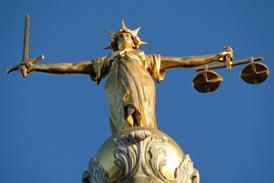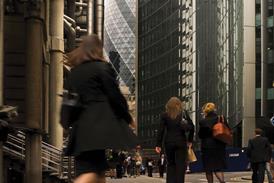Most readers will never have been on a demonstration. Many may well feel that ‘kettling’ by the police of demonstrators is a perfectly reasonable tactic in the face of recent violence at education demonstrations. But, as we undoubtedly face more protests in what may well be a rather unhappy new year, the practice of kettling protesters is overdue for review.
Marches, protests and demonstrations have posed, and always will pose, difficult policing issues.
Most demonstrators are not violent and shift pretty quickly away from the sight of the riot shields or motorcycle helmets that can announce its likelihood. An abiding image of the recent education riots was the circle of determined young women who were brave enough to protect a battered police van.
However, there is always a chance of violence from elements in a crowd – either pre-planned or executed in the heat of the moment. The Metropolitan Police website remarks, perhaps a little complacently, that ‘historically, rioting has regularly occurred in London’.
Whatever its original grievance, it is easy for a crowd to be antagonistic towards those tasked with the duty of controlling it. Close viewers of Upstairs, Downstairs will have seen the marbles used to unseat mounted police officers at anti-fascist marches in the 1930s. Those very same marbles might have been used again at Grosvenor Square in 1968.
Like protesters, police can use violence as a planned or provoked response to a crowd.
We have had police baton charges since 1848. The original ‘Bloody Sunday’ on 13 November 1887 led to the death of three at a protest about Ireland. Technology, here as elsewhere, has brought greater accountability. Allegations relating to the death of Ian Tomlinson at a demonstration in 2009 were going nowhere until an American fund manager released mobile phone film that showed Mr Tomlinson collapsing after apparent contact with a police officer and possibly his dog.
Similarly, the reality of December’s kettling on Westminster Bridge is revealed in a video taken by Musab Younis and published on the Guardian website. It shows demonstrators being compressed between two lines of police officers with no freedom of movement and no way out.
It is quite proper – indeed, imperative – that the police have techniques of crowd control. As an early spectacular, 150,000 special constables, hurriedly sworn in the day before, packed bridges over the Thames to block a Chartist demonstration from Westminster in 1848. ‘Kettling’ is much more recent.
It is, effectively, the opposite of traditional policing techniques. It seems to have first emerged in the policing of a demonstration in Hamburg in 1986 and been initially used here at Euston station in 1999.
As a strategy, kettling has obvious attractions in crowd containment, particularly where elements in a crowd may be indulging in ‘hit and run’ tactics, as was alleged last autumn. It also has major disadvantages.
Kettling can be indiscriminate, sweeping up bystanders and peaceful protesters. It can be intimidatory, both directly to those inside the kettle and those who might be deterred from going to a demonstration by not knowing when they might go home. Kettling can be escalatory if tempers are raised in consequence of the frustration of being contained.
It can also easily be perceived as collective punishment.
Notwithstanding these arguments, kettling survived challenge in the House of Lords in Austin v Metropolitan Police Commissioner ([2009] UKHL 5). However, the European Court of Human Rights may not uphold the rather ropey argument that those in the kettle were restrained for public order purposes rather than detained in breach of article 5 of the European Convention on Human Rights.
The House of Commons Home Affairs Committee was rather less complacent. In 2009, it recognised that kettling should only be ‘used sparingly and in clearly defined circumstances’ which should be ‘codified’ – ‘it is not acceptable under any circumstance for a blanket ban on movement to be imposed’.
The legal authority for kettling is more than a little tenuous. It lies either (or both) with common law powers to prevent a breach of the peace or a somewhat tortuous inversion of powers under the Public Order Act 1986 to order dispersal (the House of Lords arguing that such a power may include a direction to ‘stay in a specified place for as long as is necessary for the dispersal to take place’).
The education protests of the autumn are likely to be just the start of a period of demonstrations against public sector cuts – somewhat akin to that of the 1980s. This gives an urgency to sorting out our policies on the policing of protest; this is not a problem that will disappear.
We need to agree the principle. Everyone surely has freedom of movement and protest except where strictly necessary for reasons such as the maintenance of public order. So the UK might as well finally ratify article 2 of protocol 4 to the European Convention on Human Rights which effectively says just that.
In addition, we should put police common law powers on a statutory footing. In doing so, we should heed voices like that of HM Inspector of Constabulary.
He recommended that the police needed to ‘demonstrate explicit consideration of the facilitation of peaceful protest throughout the planning process and the execution of the operation or operations’. And, if you are going to hold people for periods of seven hours, you actually do have to make arrangements for mundane things like toilets and water – inconvenient though it might be.
Roger Smith is director of the law reform and human rights organisation Justice


























No comments yet